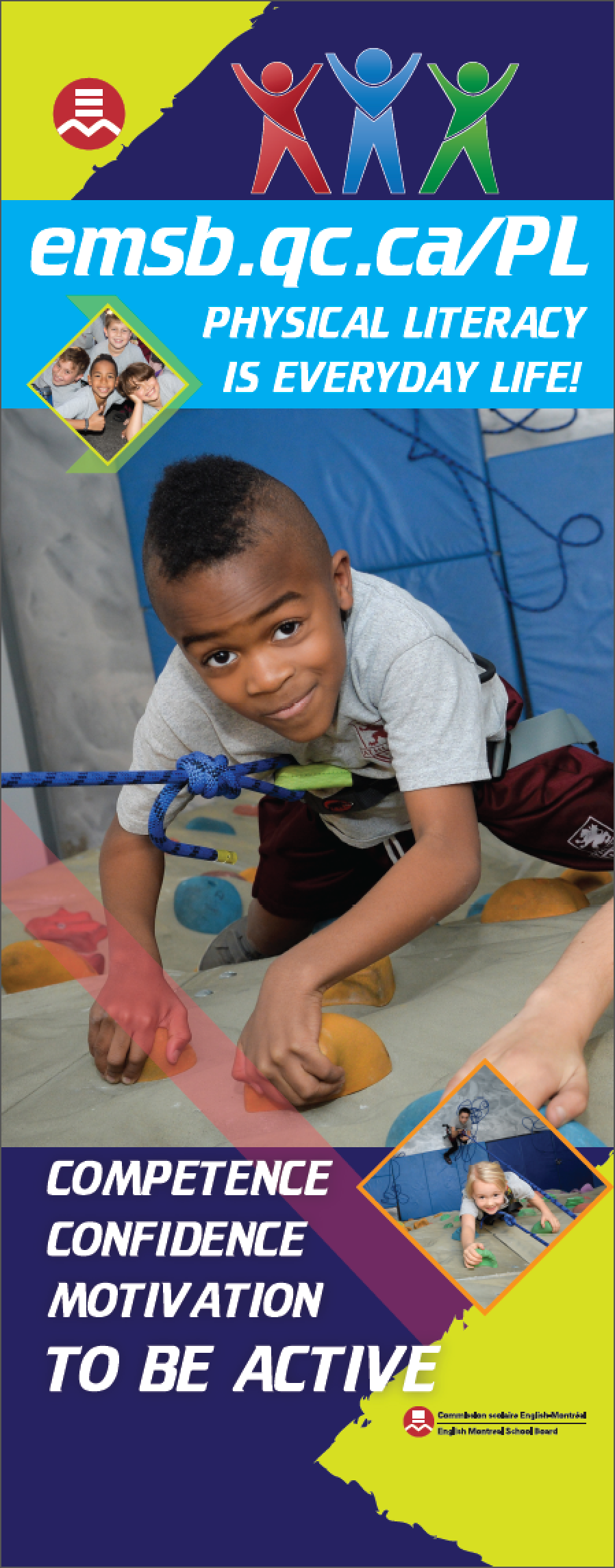What is physical literacy?
Physical literacy is about developing the competence, confidence and motivation to be active in a variety of ways and environments. The idea is that by being confident in the physical, students benefit in their overall physical, mental and emotional health. Physical Education plays a critical role in developing physical literacy – in Phys. Ed. classes, students develop their movement competence, and Physical Education teachers are also careful to structure their classes to encourage confidence and motivation, two important components of physical literacy. The benefits of regular physical activity are already well documented: sustained long-term health, increased social connectedness, improved general mental and physical well-being and better quality of life. But children who are more physically literate have more access to these benefits, which is central to their success as students.
The EMSB’s strength in physical literacy rests on four pillars: its robust Physical Education and Health programs, its “60 Minutes of Daily Physical Activity” program (based on the Quebec government initiative À l’école, on bouge!), its avid participation in inter-scholastic sports and its additional programming in outdoor and active living activities.
The EMSB strives to help all students achieve success, and supporting the development of physical literacy through various programs is an important pathway to this goal. What’s more, more movement in the school day is usually accompanied by more fun and engagement in the classroom.


